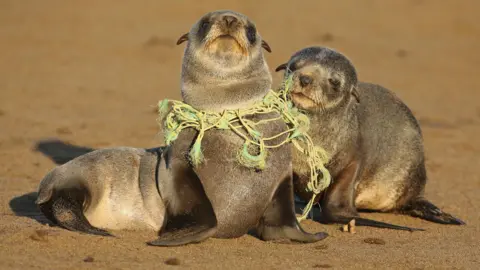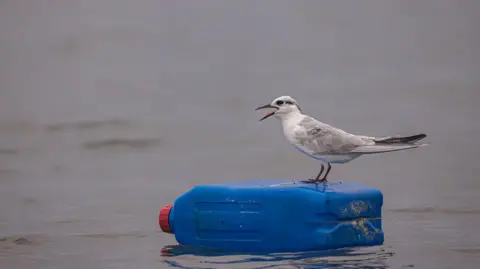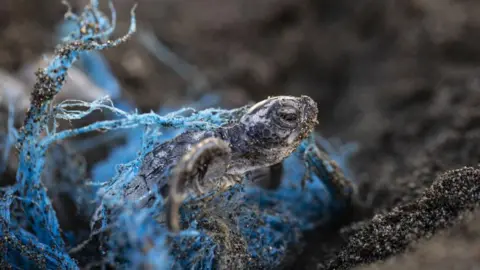Helen BriggsBBC environment correspondent
 Getty Images
Getty ImagesScientists analyzed 10,000 autopsies of marine animals to understand how eating plastic leads to death.
A study found seabirds were at extreme risk after ingesting just 23 pieces of plastic, giving them a 90% chance of dying. Marine mammals face a similar risk at 29 pieces, while sea turtles need to ingest about 405 pieces to reach the same threshold.
Researchers were surprised by how little plastic could be dangerous: soft plastic less than the size of a football could be lethal to a dolphin, and a seabird could die after swallowing a few pieces of rubber smaller than a pea.
They say the results could help shape global efforts to protect wildlife.
 Getty Images
Getty Images“This is a really important reminder that plastic pollution does pose a real threat to ocean wildlife,” said lead researcher Dr Erin Murphy of the US environmental group Ocean Conservancy.
The analysis used autopsy data from seabirds, sea turtles and marine mammals such as seals, sea lions and dolphins collected around the world. Nearly half of the sea turtles, a third of the seabirds and one in ten marine mammals studied had eaten plastic.
The researchers assessed the risk of death from ingesting different types of plastic in each group of marine animals.
They discovered a type of plastic: rubber is most dangerous to seabirds; soft plastics and fishing debris pose the greatest threat to marine mammals; Both hard and soft plastics threaten turtles.
 Getty Images
Getty ImagesThe study only looked at plastics found in animal stomachs. It did not assess chemical exposure or entanglement, meaning the true scale of harm is likely to be higher.
Hundreds of marine species have been found with plastic in their bodies. Birds often swallow plastic fragments, and turtles mistake plastic bags for jellyfish. However, until now, scientists did not have accurate data on how deadly plastic is to animals of different sizes.
Dr Murphy added: “To effectively tackle plastic pollution, the science is clear. We need to reduce the amount of plastic we produce, improve collection and recycling, and clean up what we already have.”
The study was published in Proceedings of the National Academy of Sciences.









